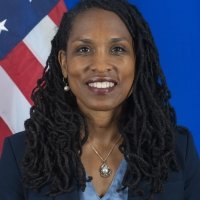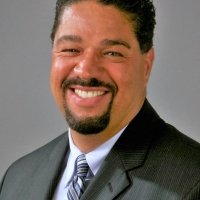Human Rights and the Environment: How Do We Do Better?
2015 was a deadly year for environmental activism. According to Global Witness, 185 activists were killed, a 60 percent increase from 2014. Of the victims, 40 percent were indigenous people, like Berta Cáceres, who spoke at the Wilson Center last year and was shot and killed in her home in Honduras this March.
“Meeting Berta and understanding her commitment to this issue, she knew that there was always the chance…that she along with other leaders would lose their lives,” said Santiago Ali, senior advisor to the administrator for environmental justice at the U.S. Environmental Protection Agency.
Leaders of the civil rights movement in the United States knew “they were constantly putting their lives at risk, that the next day was not promised, but that the sacrifices that they were making was to lead to a better future for everyone,” said Ali. Many of today’s environmental leaders “have the same understanding – that what they are really doing is fighting for civil rights.”
At an event co-sponsored by the Henry M. Jackson Foundation, Ali was joined by experts from non-government environment and advocacy organizations to discuss environmental justice and human rights at the Wilson Center on June 22.
Getting to Green 2.0
Environmental justice is defined by the Environmental Protection Agency as “the fair treatment and meaningful involvement of all people, regardless of race, color, national origin, or income, with respect to the development, implementation, and enforcement of environmental laws, regulations, and policies.”
In the United States, it is a term most commonly invoked around issues of race. Looking at the environmental justice movement, a majority of actors are people of color, but when you look at the mainstream environmental movement, the composition is the opposite, said Whitney Tome, executive director of Green 2.0, an organization that tracks and encourages racial diversity in the U.S. environmental movement.
Tome began to take note of this disparity in her early career working in ocean conservation with the Environmental Defense Fund where she was often “the only person of color who ever showed up in a room.”
Inclusiveness is not just an ethical or moral concern, she said, but a matter of effectiveness. If leadership does not reflect the kind of people environmental groups are working to protect, they are less likely to be effective. In the United States people still lack access to clean air, water, and food, and communities of color tend to be disproportionately affected, said Tome. Yet, in a survey of private and public environmental organizations, Green 2.0 discovered that on average people of color make up no more than 16 percent of staff.
People of color will be a majority in the United States by 2042, said Tome, which will carry significant economic and political leverage as well as important implications for leadership at various levels. “There is the moral case, there is the business case, and there is the political case here.”
Indigenous Inclusion
Indigenous rights are at the heart of this conversation internationally. Some environmental groups have been accused of ignoring local wishes in efforts to conserve biodiversity or wildlife areas or working with corrupt governments and corporations to boost funding.
“There is the moral case, there is the business case, and there is the political case here”
“There is the potential to just get wrapped up at this very international level, and to be having this conversation up there, and maybe you think that everybody is speaking the same language,” said Theresa Buppert, director of indigenous policy and practice at the non-profit, Conservation International. “But then when you come down to a local level, it doesn’t resonate at all and it’s maybe not representative at all of the concerns on the ground.”
Conservation International tries to ensure programs authentically represent stakeholder voices by connecting what is happening on the ground with decision-making at the top. Buppert highlighted two programs as being particularly successful: an indigenous leaders’ conservation fellowship program and an indigenous advisory group that provides feedback on policies and projects.
The fellowship “is an opportunity to recognize indigenous local leaders who…have an idea on how to advance their traditional knowledge,” said Buppert. “Their research can then serve a greater purpose and it can feed back into these higher level discussions.”
One of the first fellows, Hindou Oumarou Ibrahim, researched climate change’s impact on the Lake Chad area in 2011 and how traditional knowledge can help communities adapt. Ibrahim now is an expert on indigenous rights and climate change, and spoke at the signing of the Paris climate agreement following COP-21.
The Climate Challenge
The rights of individuals forced to move by climate change are an especially difficult new area for human rights, said Maxine Burkett, a public policy fellow at the Wilson Center and professor of law at the University of Hawaii at Mānoa.
“Environmental migration falls outside of more traditional protection regimes, like the refugee treaty. And that’s important because legal definitions bind states in ways that descriptive labels cannot.”
Burkett said the absence of a legal framework for those affected by climate change is already aggravating suffering and creating a positive feedback loop in which the most vulnerable are made more so.
In order for there to be climate justice, there needs to be legal infrastructure that binds states to human rights commitments, she said. “The law is supposed to be sort of the walking, talking, demonstration of our ethics, of our public values that we’ve sort of reached by consensus.” But the solutions being proposed for climate change too often focus on what seems politically possible versus what is right.
She pointed to the idea of “climate refugees” as an example. The term has no legal connotation at the moment and some resist creating one because of concerns over how to determine whether someone has been displaced by climate change or another potentially overlapping factor, like poverty. This hesitance shifts the conversation from solutions that could be “reparative” to those that are “simply accommodating,” putting the burden primarily back on the displaced.
To Be a Full Community
“When you give communities the opportunity to define what their future looks like, it can yield huge benefits,” said Ali. Creating space for young people in the environmental movement in particular “can be a driver in the innovation that’s going to be necessary for us to address environmental justice, to address climate justice, to address climate change, and sustainability and equitable development.”
ECSP Director Roger-Mark De Souza pointed to Laura Stewart, an ORISE research participant at the EPA and Henry M. Jackson fellow, as an example of the potential of youth leadership. Originally from Swaziland, she now does research on environmental justice in Seattle and created a short film highlighting marginalized communities in Puget Sound.
The mainstream environmental movement is something of a “closed club”
In the past, decision-makers could dismiss community warnings, but that is becoming more difficult as people broadcast their own stories through social media. “You can see the impacts that are happening and folks document it through video and other formats, so utilizing that has helped to sort of galvanize the movement,” said Ali.
Micro grants – putting money in the hands of beneficiaries to do with as they choose – is one way environmental organizations are looking to empower stakeholders, said Buppert. When funding is directed by communities, solutions tend to be more holistic because decision-makers have a greater understanding of the barriers to services and how to make the biggest impact, said Ali.
The mainstream environmental movement is something of a “closed club,” said Tome, which can have a tremendous impact on where funding goes and which communities benefit.
“The theory of change around environmental justice and micro granting is attempting to sort of leapfrog over the interlopers who might not have the best interest of those communities in mind,” said Burkett.
The future of the environmental movement requires unification around a rights-based approach and more holistic solutions, said the panelists. To do that, intersectionality should be recognized and celebrated from within.
“We need to be a full community, and we need to embrace everybody in the community,” said Tome. She pointed to the response to the Flint water crisis as evidence of environmental leadership being disconnected from its most afflicted constituents. Organizations must see that an issue “might not be your mission, but it intersects with so many people in the movement or the movement’s overall goal, that you should stand in solidarity.”
Event Resources:
Written by Adrienne Bober, edited by Schuyler Null.
Feature Photo Credit: Protesters demonstrate about the death of Berta Cáceres, courtesy of Daniel Cima/Comisión Interamericana de Derechos Humanos.
Speakers


Vice President, Sustainable Markets, Pact
Hosted By

Environmental Change and Security Program
The Environmental Change and Security Program (ECSP) explores the connections between environmental change, health, and population dynamics and their links to conflict, human insecurity, and foreign policy. Read more
